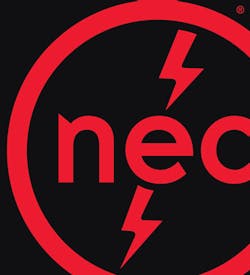Do you know where to find the voltage drop rule in the NEC? That’s a trick question.
The NEC has many rules. Some rules are mandatory [90.5(A)] (you must comply), and others are permissive [90.5(B)] (it’s allowed, but you don’t have to do it). But the NEC doesn’t have a rule for voltage drop.
Not everything in the NEC consists of rules. The NEC also has explanatory material that’s intended to help the Code user by providing information beyond the NEC’s purpose of protecting people and property. The material consists of Informational Notes [90.5(C)] and Informative Annexes [90.5(D)]. For voltage drop, there’s one Informational Note preceding 210.19(A), one following 310.15(A)(1), and one following 647.4(D).
The NEC provides the minimums necessary for safety, not design requirements that produce the most efficient operation. This is why the Informational Note in 310.15(A)(1) says, “Ampacities provided by this section do not take voltage drop into consideration.”
About the Author

Mark Lamendola
Mark is an expert in maintenance management, having racked up an impressive track record during his time working in the field. He also has extensive knowledge of, and practical expertise with, the National Electrical Code (NEC). Through his consulting business, he provides articles and training materials on electrical topics, specializing in making difficult subjects easy to understand and focusing on the practical aspects of electrical work.
Prior to starting his own business, Mark served as the Technical Editor on EC&M for six years, worked three years in nuclear maintenance, six years as a contract project engineer/project manager, three years as a systems engineer, and three years in plant maintenance management.
Mark earned an AAS degree from Rock Valley College, a BSEET from Columbia Pacific University, and an MBA from Lake Erie College. He’s also completed several related certifications over the years and even was formerly licensed as a Master Electrician. He is a Senior Member of the IEEE and past Chairman of the Kansas City Chapters of both the IEEE and the IEEE Computer Society. Mark also served as the program director for, a board member of, and webmaster of, the Midwest Chapter of the 7x24 Exchange. He has also held memberships with the following organizations: NETA, NFPA, International Association of Webmasters, and Institute of Certified Professional Managers.
